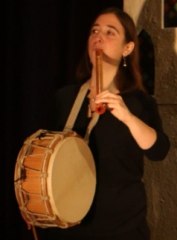worldwide traditions
women taborers
Men vastly outnumber women in all traditions that have a three-holed pipe as part of their culture. This is not because great strength is needed (often cited as a reason for men-only professions). It is purely cultural. Women were possibly there, albeit in small numbers. Or is it that women are not widely represented in the iconography because they were there in such large numbers, so common, as to be ignored? In the 21st century women taborers are becoming more visible.
This essay is put here as a discussion point and will no doubt be added to/amended by readers.
Do send views and/or pictures to Frances, project manager.
The double pipes were widespread in ancient representations of musicians. 8 archeological figurines carved in stone playing double pipes have been found in Ibiza, Spain. 6 of these figures are female. (source)  |
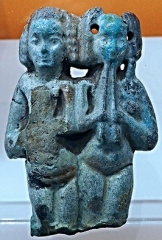 664-525BCE Egypt 664-525BCE Egyptwomen musicians double pipes and drum |
In medieval society “…despite their musical prowess and well-regarded entertaining aptitudes, women were “Alleviators of Sadness and Tedium”: Constructing a Socially Acceptable Image for the Medieval Female Performer” mauricio molina, 2015 |
|
In medieval European iconography there are many images of women playing the tabor and also hand drums, |
|
"Old English had such words as timpestere, a female drum player. The 1321 incorporation of thirty-seven 'tā̆bornester' and 'taburnistir' were middle English words for a female drummer |
|
1528 Woman Instrumentalists - Baldesar Castiglione's 'The Book of the Courtier'. This book was extremely 'THE GENDER STEREOTYPING OF MUSICAL INSTRUMENTS IN THE WESTERN TRADITION' by Rita Steblinz |
|
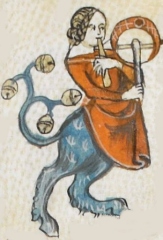 This hybrid is definitely part female This hybrid is definitely part female by the hairstyle c.1300. |
In European medieval manuscripts
|
|
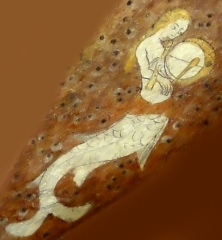 1313 medieval mermaid, ceiling painting, Beauvais, France 1313 medieval mermaid, ceiling painting, Beauvais, France |
 c.1350 Belgium c.1350 Belgiumprobably Tournai, hybrid |
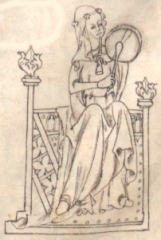 14th century London 14th century London |
|
||||||||
|
 1533 Design for a triumphal arch for Anne Boleyn's coronation procession in London, England. 1533 Design for a triumphal arch for Anne Boleyn's coronation procession in London, England. |
|
1500/1546 Germany David and Saul returning from battle against the Philistines are met by Israelite women in front of the city walls one of whom plays the pipe and tabor. |
|||||
“Wind instruments were frowned upon. Their distortion of their player’s face during the performance from: ‘My virgin cheeks puffed up’: Classical Mythology, Women and Wind Instruments During the Early Modern Period' by Laura Ventura Nieto |
|||
| Five images depicting Jephthah's Daughter, the Bible, Judges 11: | |||
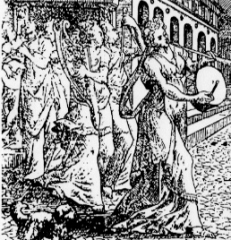 1570 Czech bible - women's band 1570 Czech bible - women's band |
|
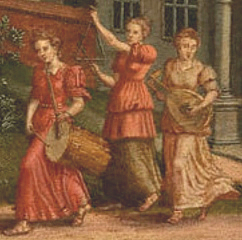 1560-80 England 1560-80 England |
|
 17th century Holland 17th century Holland |
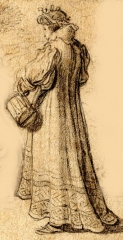 1602-1630 Holland 1602-1630 Holland |
||
 Jan Massys
(c.1510 – 1575), Flemish painter, put a female pipe and tabor player right on the edge of 'Jovial Company' Jan Massys
(c.1510 – 1575), Flemish painter, put a female pipe and tabor player right on the edge of 'Jovial Company' |
 taken from a play of 1577. taken from a play of 1577. At this time this player could be a male cross-dressing. |
|
 16th or 17th century 16th or 17th century possibly Germany, Bible |
1595-1651 Germany, Biblical scene: Israelite women come running out of the city gate. Eight of them play various musical instruments including a one-handed flute with drum | 1602 Italy “La musica è aidata esclusiva- mente alle donne, poiché sono più gradevoli, nonché ai fanciulli; non però l’uso delle trombe e dei tamburi” “Music is entrusted exclusively to women, since they are more pleasing, rather than to young boys; not, however, the use of trumpets and drums” |
||||||||
 |
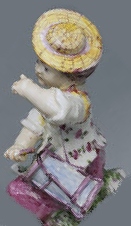 . . |
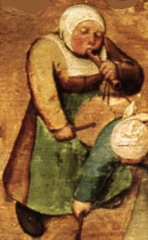 Children's Games by Children's Games by Pieter Bruegel the Elder, 1559-60 Dutch painter |
|
|||||||
| A girl child modelled in France in 1760. The pipe is missing. Maybe the pipe and tabor were seen as child's games so not worthy of being reported | ||||||||||
|
||||||||||
 ceramic, Longton Hall, ceramic, Longton Hall,Stoke-on-Trent, England, c1760. British Museum |
||||||||||
| Some have said that so few women have been depicted in the past because there were no players and it was just a fanciful curiosity: | |
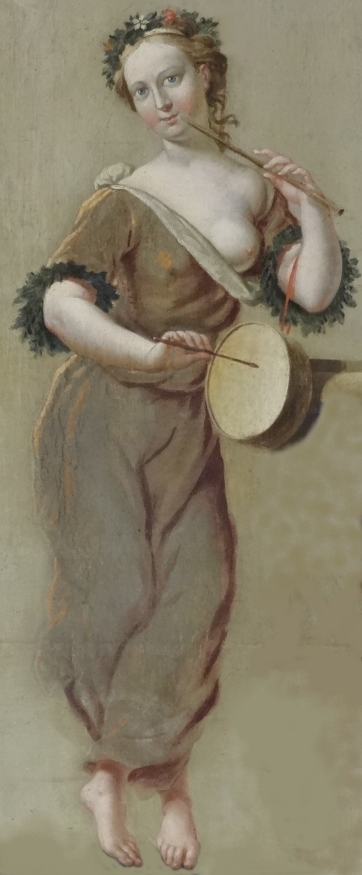 |
This is a curiosity (Wentworth Castle). The symbolism of the portrait is clear. |
 |
In the early 18th century human activities in Europe were satirised by being depicted as being carried out by monkeys.
A German court orchestra was reproduced as ceramic monkeys. This copy looks like a female.
They are usually male. |
 |
 front front |
 side side |
Three Victorian ceramic statuettes,
the first one broken. Do they show actual women or are they viewed only in the ceramic modellers' eyes as to what will sell? |
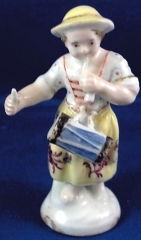 |
||||||
|
||||||||||
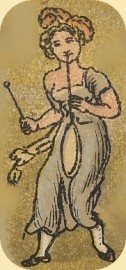 |
In the drawing ' The Harvest Home' this girl helps to lead a procession coming in from hay-making. (Thomas Rowlandson, 1756 - 1827 London, England ) |
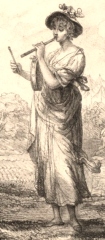 |
1801 England A group of women gather round to listen to the female taborer. |
|||||||
1811 Gypsies in Paris “…a troop of gypsies immediately engaged my attention…one of these females flourished a tambarine, ‘A Winter in Paris; or, Memoirs of Madame de C****’ |
“… the German author of a canonical music history textbook declared that Emil Naumann,The History of Music , 2 vols., trans. F. Praeger (1882-86), 2: 1267 |
(morris and folk song and dance), and street entertainments. The movement to include women
started in the early 20th century, as far as we know.
 |
J Sherman's photograph was taken alongside the Oxford University Morris Men in 1925. | 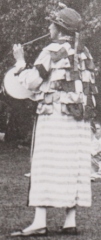 Georgie Taylor, 1925 playing for morris dancing Georgie Taylor, 1925 playing for morris dancing |
In 1926 a folk dance demonstration was given at Southall, London. Mrs Kennedy played the pipe and tabor for a morris jig. The newspaper report (West Middlesex Gazette) had the title ‘Pipe and tabor revival at Southall’. |
March 1927 "Mrs Hill playing the Morris pipe and tabor" |
|||
In the 1929/1930's Joan Sharp (1898-1968) was playing pipe and tabor for morris and country dancing in England and on tour to the USA and Canada. |
|
1927 Chelsea Polytechnic newspaper report: 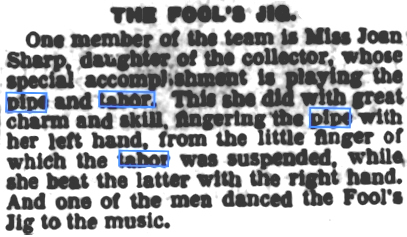 |
|
| 2023 article on Joan Sharp here | |||
| Carl Dolmetsch said " The three-holed pipe, now much used for the playing of Country Dance tunes, has also figured amongst the products of the Haslemere workshops. They were supplied to many prominent folk dancers, among them Miss Joan Sharp, daughter of Cecil Sharp, founder of the movement." |
|||
| 1927 |
||||||||||||||||||||||||||||||||||||||||
Some morris dancers were completely against women as dancers, managers and musicians until early 21st century.
A Miss Barnett was praised by the Oxford University Morris Men: |
||||||||||||||||||||||||||||||||||||||||
|
||||||||||||||||||||||||||||||||||||||||
|
||||||||||||||||||||||||||||||||||||||||
|
||||||||||||||||||||||||||||||||||||||||
|
||||||||||||||||||||||||||||||||||||||||
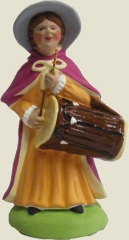 |
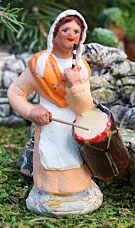 |
|
|
Provence; statuettes based on two female taborers. These are for sale alongside statuettes of men. |
|||
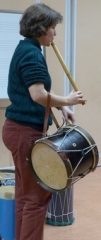 21st century Caroline Leprette, Laval, west France 21st century Caroline Leprette, Laval, west France |
 [source] [source] |
 2023 'Into the Winds' 2023 'Into the Winds' |
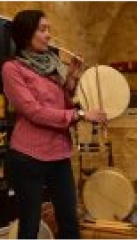 2019 early music, France 2019 early music, France |
|
|||||||||||||||||||||||
| In Hondarribia, in the Basque country, an accuser's declaration during the 1611 witch trials under the Inquisition said that he saw Inesa Gaxengoa play the tamboril. It is not known why that was used against her; whether it was because women were not allowed to play the txistu (pipe), or because playing the txistu was a sin in itself, or both. | |
 |
Ibiza, Spain, 21st century This is the first female pipe and tabor player to play in public in Ibiza. She says: "I am aware that it is something that had never been done before,
but women had never voted before, in
the end it was achieved
and now we see it as something normal and necessary in today's society
like ours" |
In Spain Pilar Marcos said in 2018: “Right now there are girls playing, they are still few, but when I started |
||||||
José Ramón Cid Cebrián was interviewed in Spain in 2015: |
||||||
|
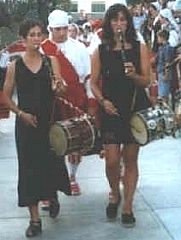 21st century, Basque Country 21st century, Basque CountryTwo women txistularis. |
resin statuette |
Women now join in with men in parades in the many festivals thoughout the region. One woman, Maitane Aurrekoetxea, took the initiative to bring together lovers of this instrument in 1999 and founded a new group. |
|||
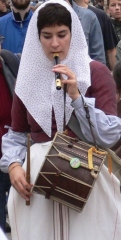 21st century, Majorca, Spain 21st century, Majorca, Spain Playing in traditional costume. |
|
|||||
|
||||||
|
||||
|
||||
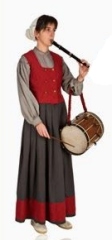 1984 Basque country (French) 1984 Basque country (French) |
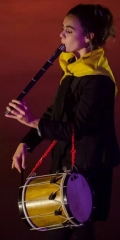 2023
Garaine Jorajuria Basque country, Txistu professor at the Conservatory of Navarra (Pamplona) 2023
Garaine Jorajuria Basque country, Txistu professor at the Conservatory of Navarra (Pamplona) |
|||
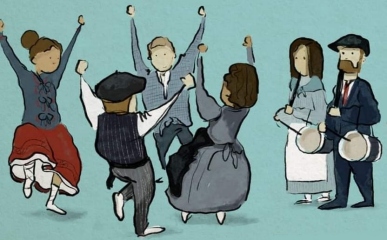 2020 Basque tourism advertising poster 2020 Basque tourism advertising poster |
For one hundred years Basque pipe and tabor (male) players have been used occasionally on tourist posters to advertise the area. This is the first time that a female player has been portrayed. [posters here] |
|||||||||||||||||||||||||||||||||
|
||||||||||||||||||||||||||||||||||
|
||||||||||||||||||||||||||||||||||
|
||||||||||||||
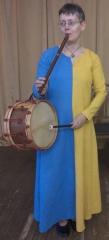 2015 Ekaterina Bonfeld,
Training center 2015 Ekaterina Bonfeld,
Training centerof the St. Petersburg Montessori school Mikhailova |
|
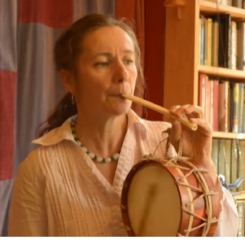 2016 Aahmes Quince, New Zealand 2016 Aahmes Quince, New Zealand |
||||||||||||
 2014 Itri, South Lazio, Italy 2014 Itri, South Lazio, Italy |
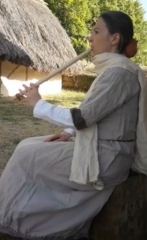 2021 Lola Teale, Italy 2021 Lola Teale, Italy |
|
||||||||||||
|
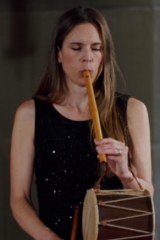 2023 Holly Scarborough, Switzerland 2023 Holly Scarborough, Switzerland |
|||||||||||||
Margo Fontijne plays the pipe and tabor in the early music group Ensemble Corona, based in Holland. |
|
| In The Taborers Society based in the UK but with international membership; one quarter of it's playing members are female. |
top of page
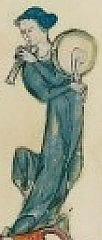 in the margins of
a
in the margins of
a 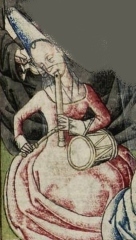
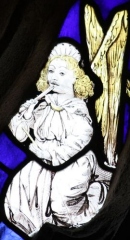
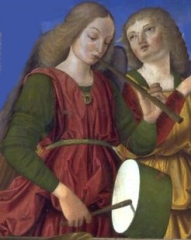
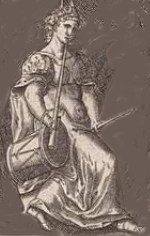

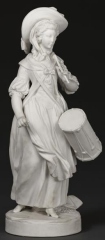
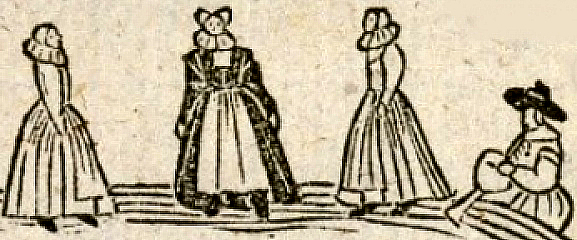 1636
1636
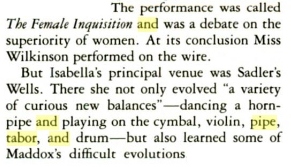
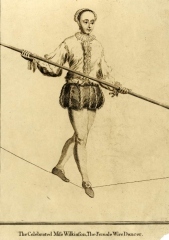
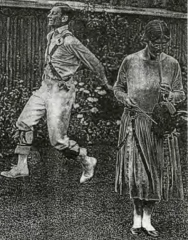
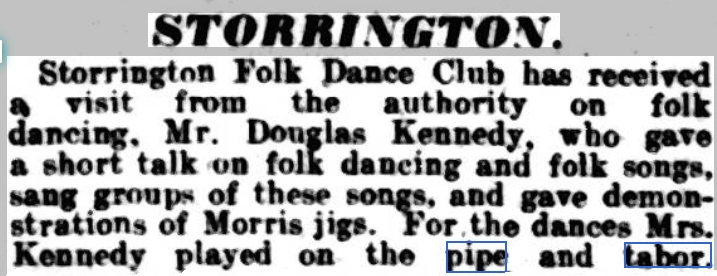
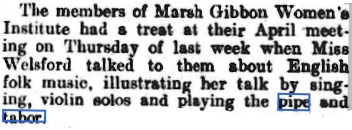
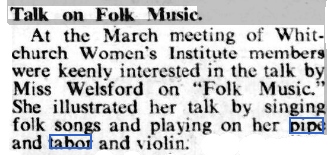

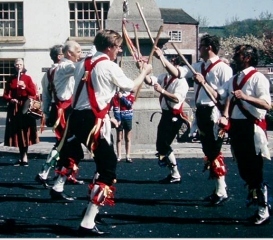
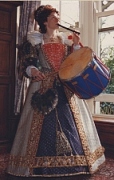
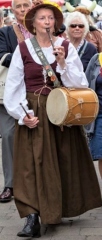
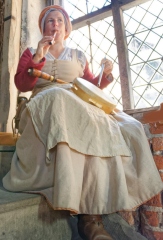
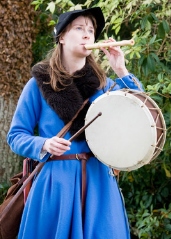
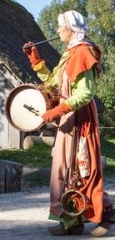
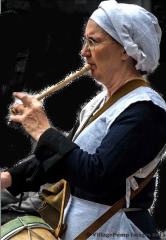
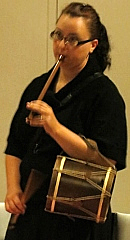

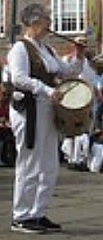
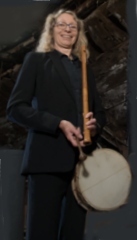

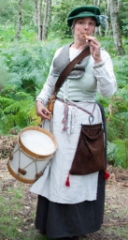
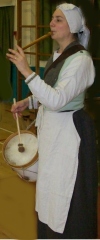
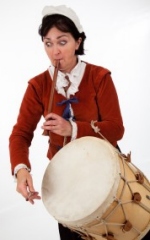
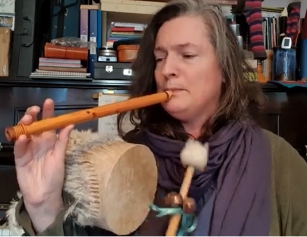
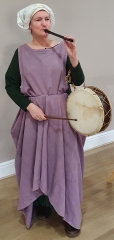
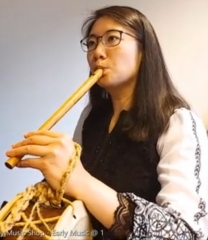

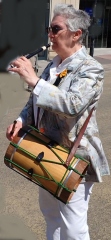



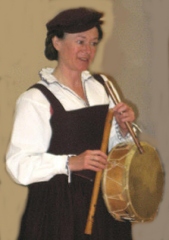

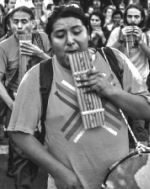
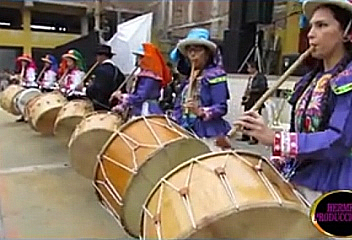

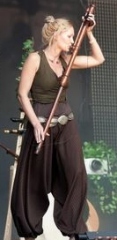
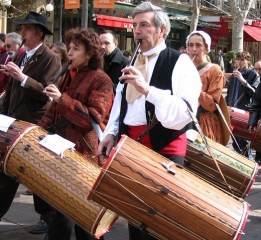
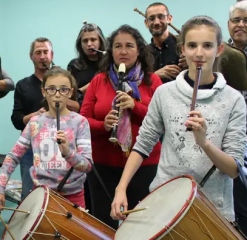
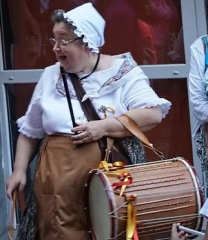
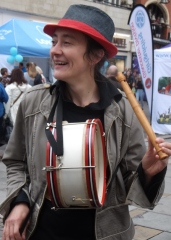
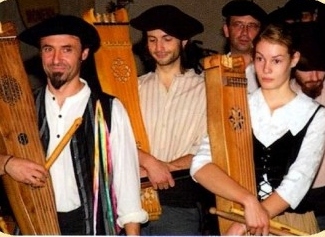
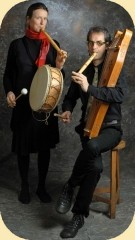
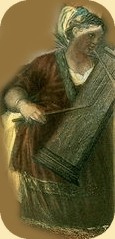
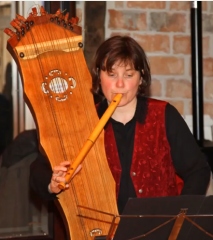
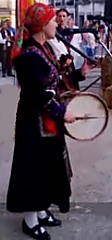
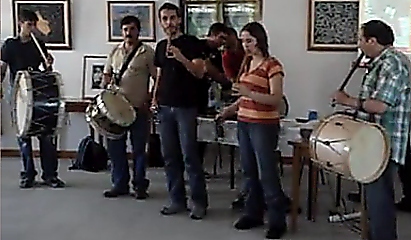
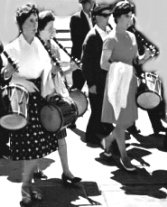
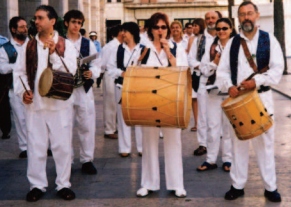
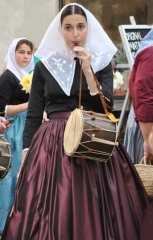
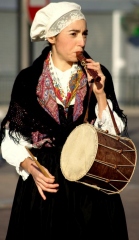
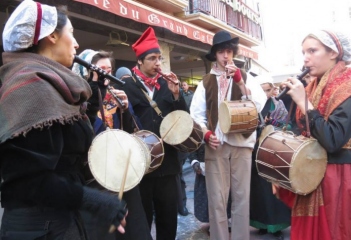
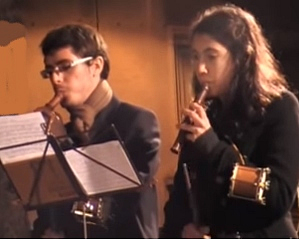
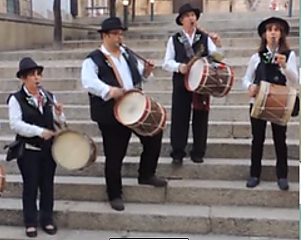
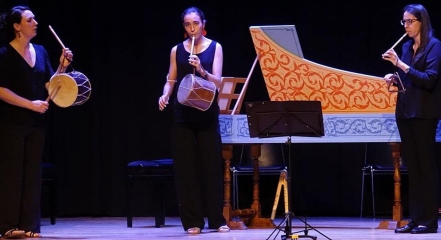
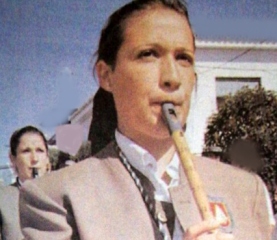
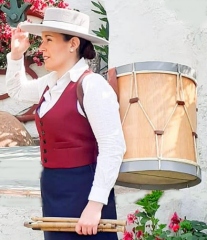
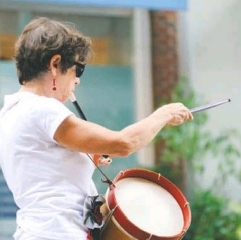

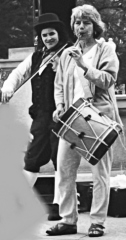
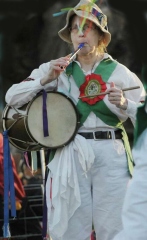
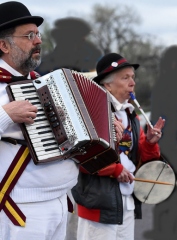

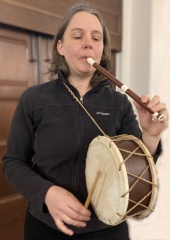
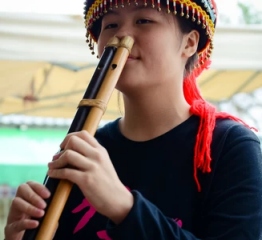
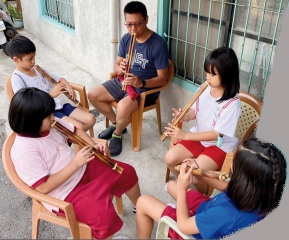
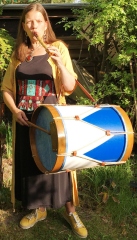
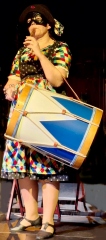
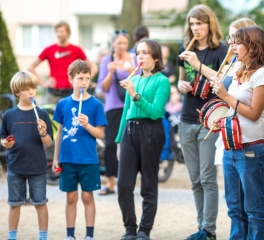
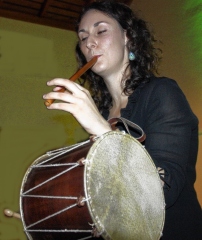
 2022
2022 